Suminagashi and the Art of Letting Go
In an advanced suminagashi workshop, I struggled with uncontrollable ink—until a miracle print appeared. Letting go led to unexpected magic.

Discovering Suminagashi
Yesterday, I attended an advanced suminagashi (Japanese marbling) workshop at the Japanese Culture Center. I first tried it back in February with the same instructor and immediately fell in love with the process. I’d been waiting for a chance to do it again ever since.
Suminagashi is a traditional Japanese art technique. You gently drop ink onto the surface of water using a brush, and it spreads into delicate, circular patterns. Traditionally, artists used thin sticks dipped in hair oil to create transparent rings on top of the ink. By layering this over and over, unique patterns would form. Once satisfied, you gently lay a sheet of paper onto the surface to transfer the design.
Modern suminagashi often uses colorful inks, but the classic palette is limited to just three: black, white, and vermilion (red-orange).
The Challenge of the Advanced Class
In my previous beginner workshop, I ended up with several pieces I loved.
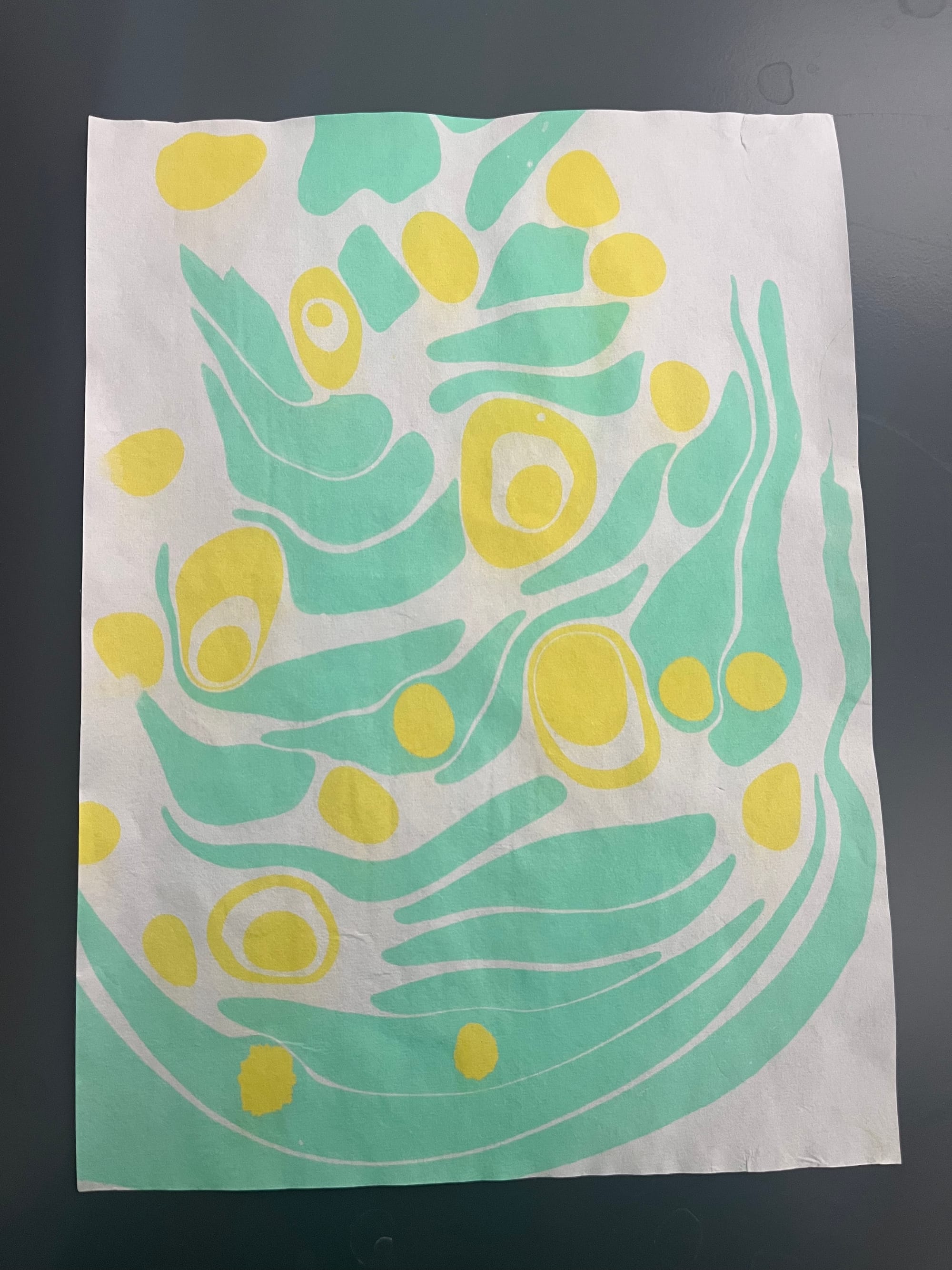
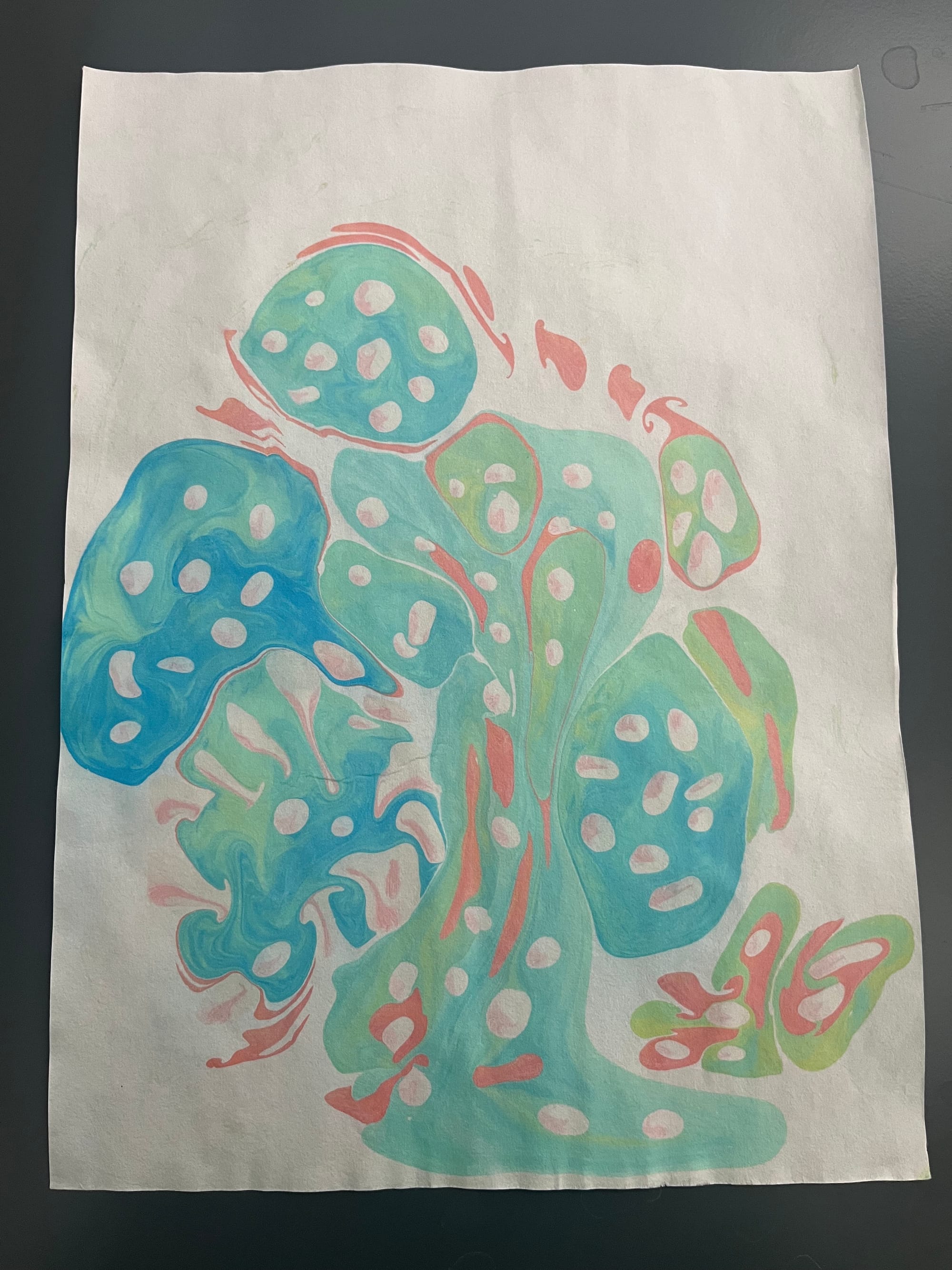
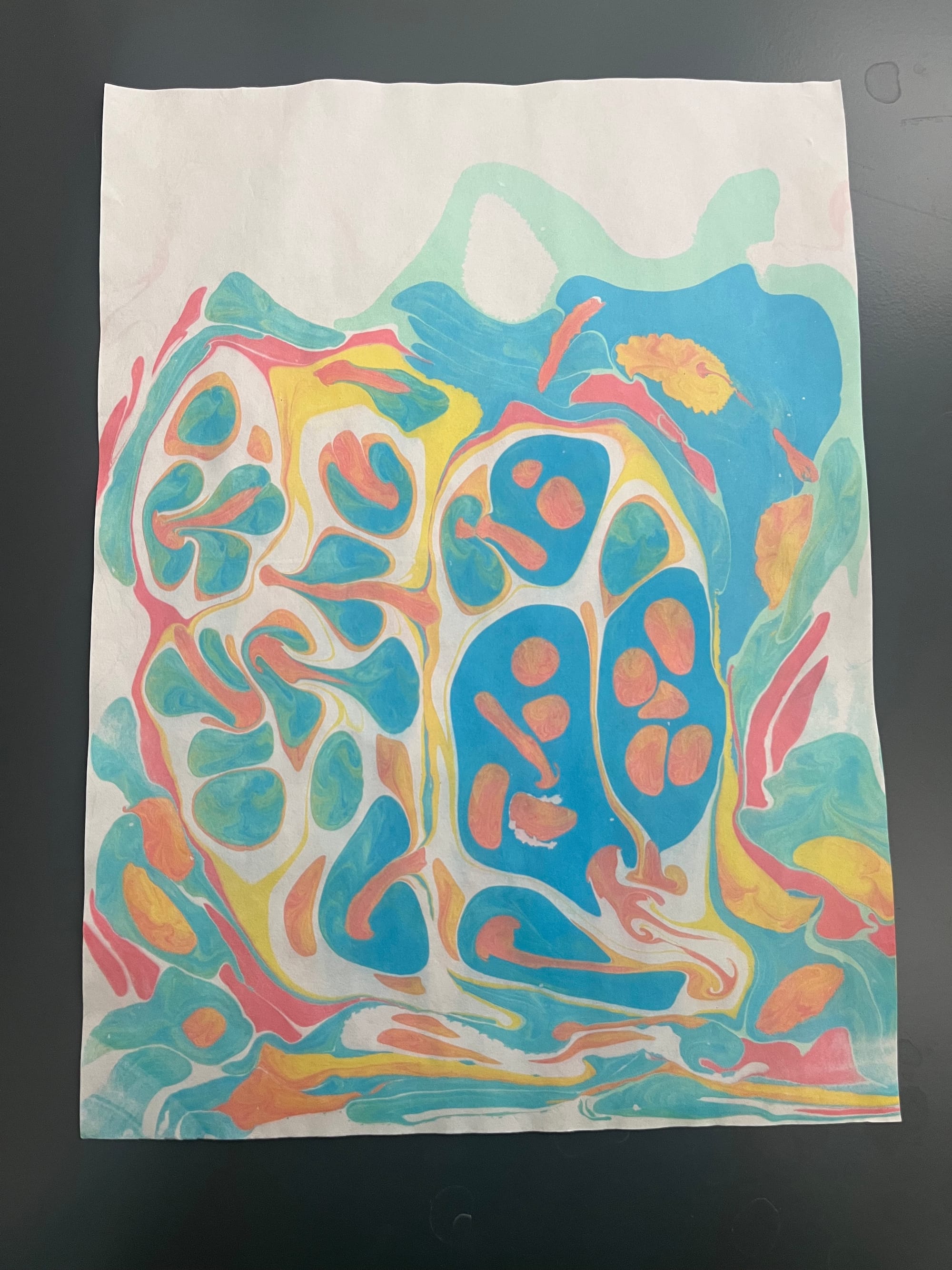
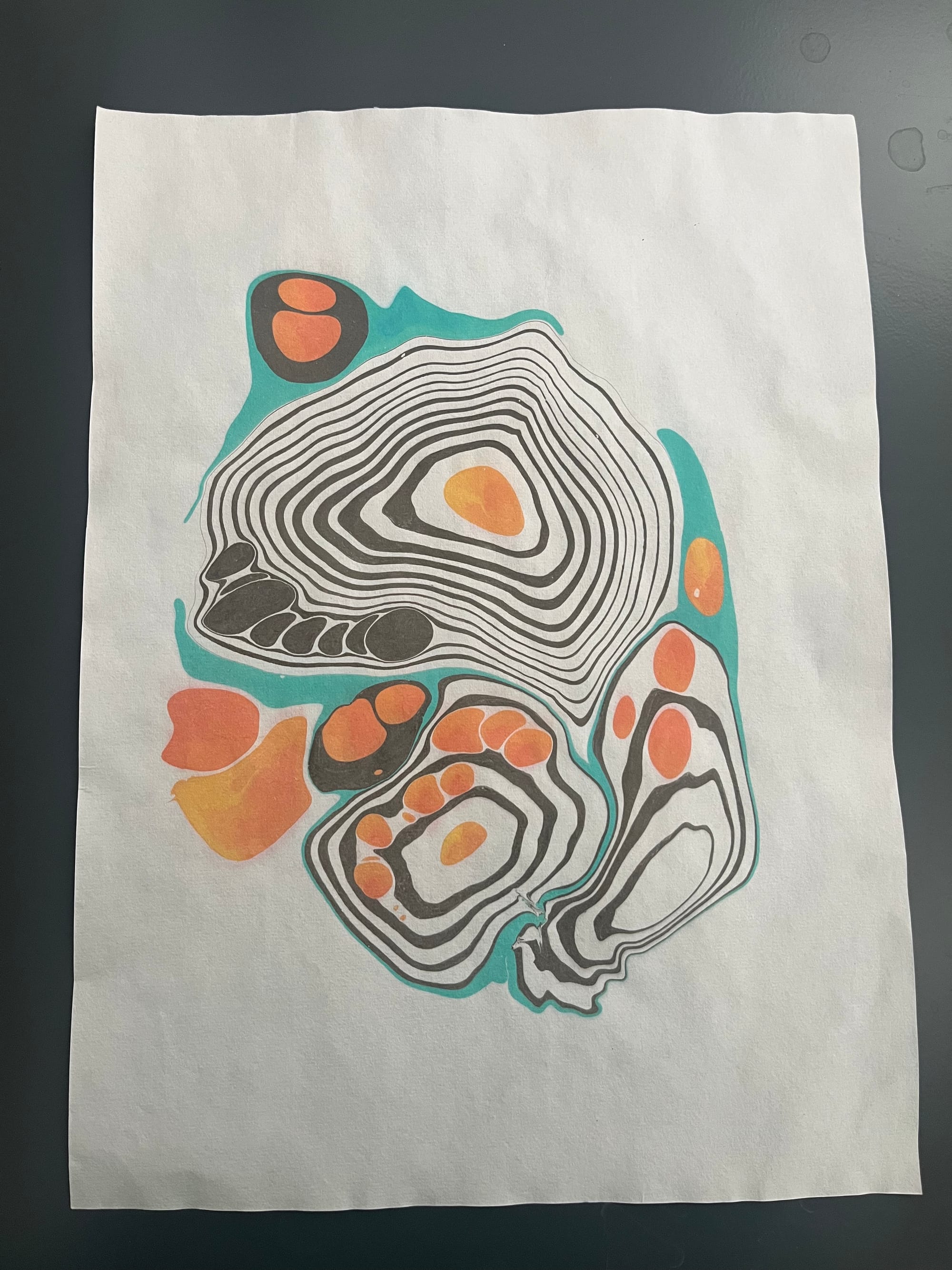
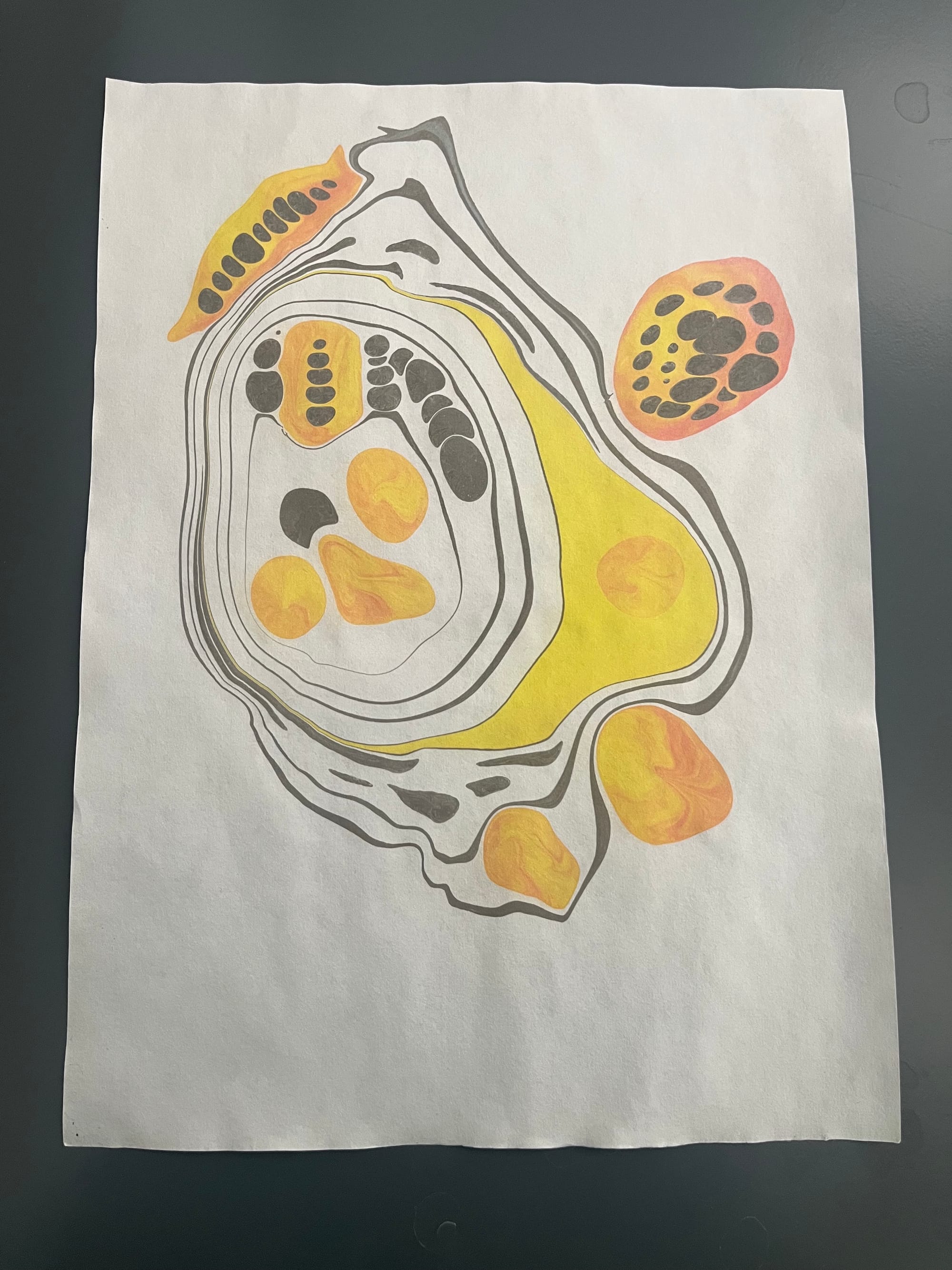
They are all masterpieces from last workshop—what a harvest!
But this time, the advanced class came with new challenges. Both the inks and the water mixture were different from the standard version.
As usual with suminagashi, there’s no way to predict how the ink will spread—but this time, the ink behaved even more unpredictably. According to the instructor, the effect would resemble lace patterns, but to me it felt more like everything was falling apart! I felt completely frustrated by the way the ink refused to stay within any sense of control.
A Rollercoaster of Ink and Emotion
I couldn't seem to create anything I was proud of. But I kept going, driven by the tiny hope that maybe the next one would be the one. I dropped ink after ink, gently lifting paper after paper from the surface.
And then… finally, a masterpiece!
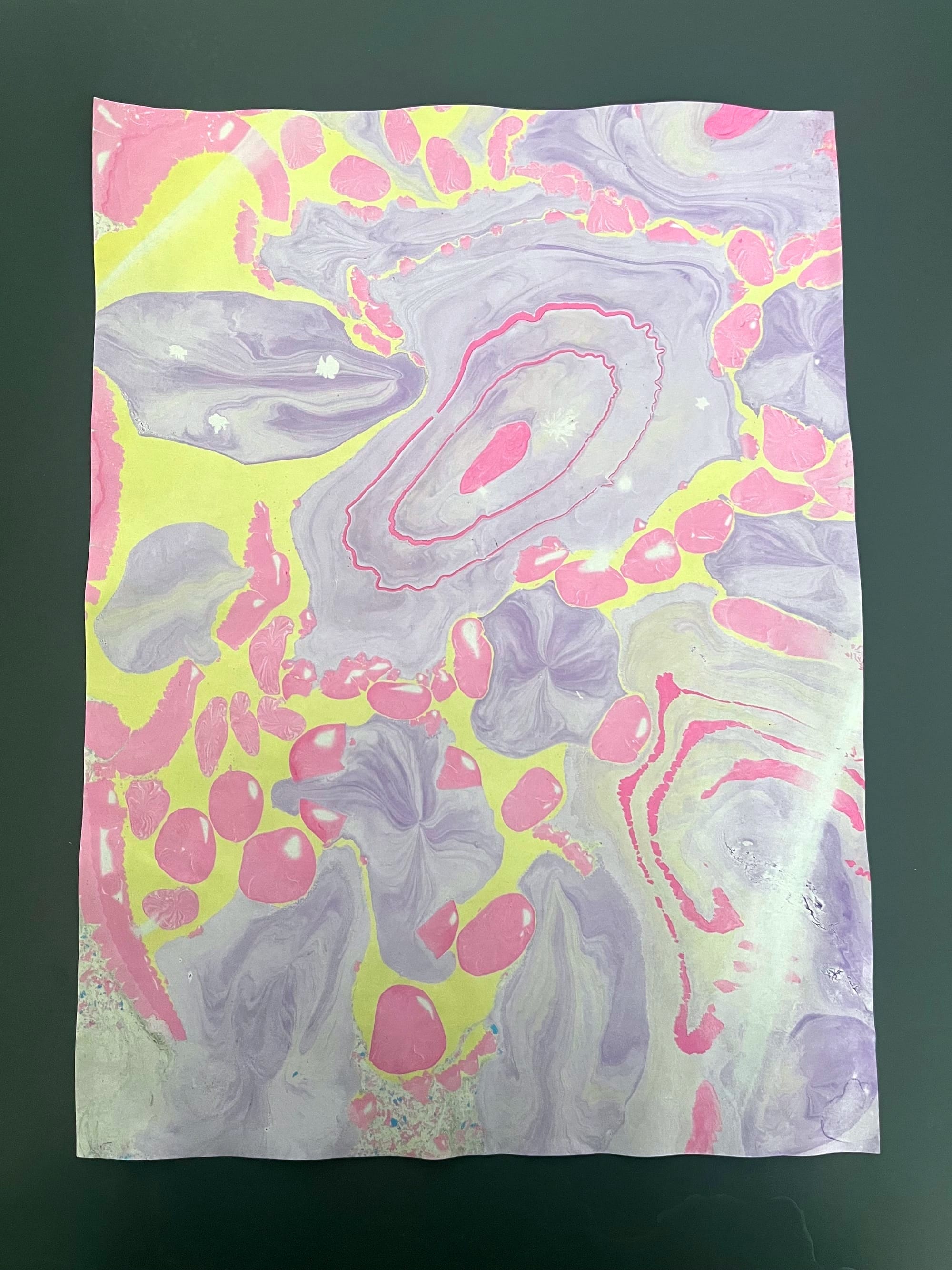
There it was: a purple bloom of ink spreading beautifully, a white highlight layered on top of a pink blob, and in the corner, a tiny pink-and-blue mosaic—probably pigment left behind from a previous piece. It was beautiful. And it was pure chance.
The Wisdom of One-Time Beauty
Suminagashi is the kind of art you can’t replicate. Once a piece is made, it’s done. There’s no recreating it. That’s what makes it feel so connected to the Japanese phrase “ichigo ichie(一期一会)”, meaning “a once-in-a-lifetime encounter.”
I usually like to have control when I make art—refining my lines, rethinking colors—but this experience reminded me that letting go can be just as powerful. Instead of forcing the outcome, I let the ink, water, and paper speak to each other.
This technique gave me something precious: a creative moment that couldn’t be planned, only discovered.
